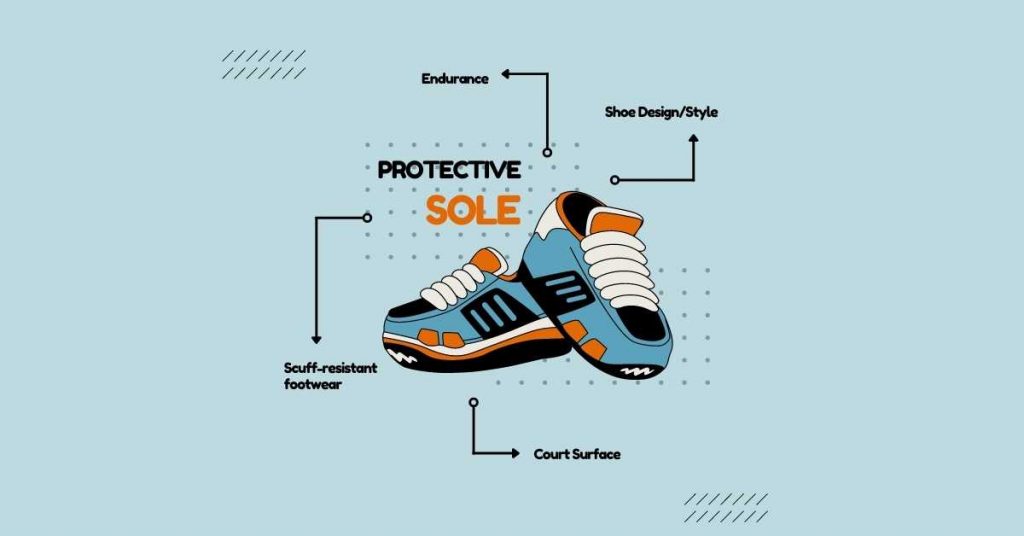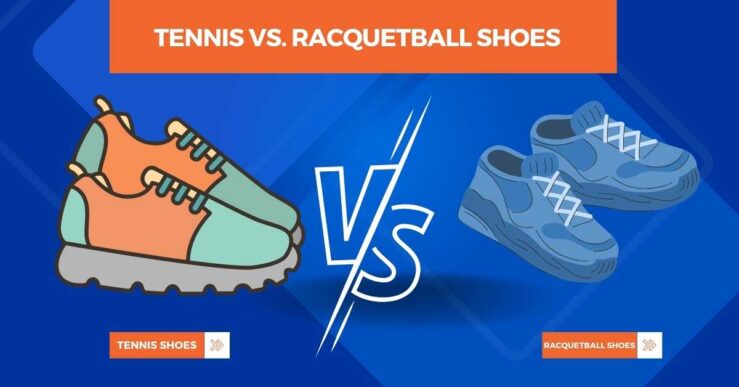Despite the fact that tennis and racquetball are sometimes contrasted, the two games are very different. For starters, the sports’ playing surfaces differ and are quite specialized to each discipline. Certain skill sets and equipment may be appropriate for tennis but would handicap a racquetball player.
For each sport, different rules, styles of play, and even different serious injuries demand distinct types of shoes. Tennis is played in a very different way than racquetball, and each sport has its own set of rules.
When it comes to racquetball, the abilities and equipment utilized in tennis aren’t very useful. Before we get into the different shoes for each sport, let’s have a look at what each sport includes.
Racquetball has grown in popularity at the forefront of the sport during the previous decade. This is due to a variety of factors, one of which is how enjoyable and tough the game is to play. In so many ways, it resembles tennis and squash that it’s easy to be confused between the three games. Don’t worry if you’re perplexed at the end of this article, you’ll have a better understanding of them.
Difference between Tennis Shoes and Racquetball Shoes
Just because the two games are comparable doesn’t mean you can wear the same shoes on a tennis or racquetball court. The following sub-title goes through why you shouldn’t play racquetball in tennis shoes. Likewise, vice versa.

1: Shoe Design/Style
Tennis and racquetball shoes appear to be identical, however, there are minor distinctions. Tennis shoes have stronger corners that are highly beneficial when making differential motions and a less prominent toe to help when stopping and charging the net, which some people may connect with running shoes.
Instead of being developed for speed like tennis shoes, racquetball shoes have a flexible rubber sole that provides excellent traction on the smooth and slippery surface. Racquet shoes are also designed to be comfortable, allowing you to change directions and move about the court with ease while still protecting your feet and ankles.
2: Court Surface
The fundamental distinction between tennis and racquetball is the type of court on which each game is played. A decent pair of tennis shoes should be able to give you the balance and comfort you require while the strengthened rubber at the toe area protects your toes from the sandy hard surface.
A classic racquetball court is made of wood, but it is protected with oil-based polyurethane to keep it smooth, bright, and slick. Tennis shoes are not meant to provide enough traction on a slippery surface with extra control over your emotions, whereas racquetball shoes are.
Related to : How To Wash Tennis Shoes In Washing Machine?
3: Endurance
In every sport, endurance is crucial, and the shoes you wear should be capable of producing the best results. Tennis shoes are made for fast lateral movements over a vast area at high speeds, but racquetball shoes are made for shorter, faster motions that need more grip for stability and tiny bursts.
If you try to rotate to return a shot while wearing tennis shoes on a smooth and sleek indoor court, you’ll almost certainly slip. And, because racquetball shoes are so light, they wouldn’t be very helpful on a tennis court.
4: Scuff-resistant footwear
The type of shoes you should wear differs significantly between tennis and racquetball shoes. In tennis, you should wear non-marking shoes to avoid leaving scuffs and lines on the court, however in racquetball; you should use xanthan shoes that won’t leave black traces on the surface.
5: Protective
Every sport has its share of injuries, but tennis and racquetball have their own set of injuries that necessitate the use of particular shoes. Tennis is more difficult than racquetball, so you’ll need extra cushioning and assistance, as well as the ability to make quick deflections.
Tennis players make fast stops near the net, necessitating stronger support and stability and toe strengthening, but racquetball players change directions on all sides, necessitating all-around support and improved grip for jerky motions. Tennis injuries are more likely to affect your ankles and knees, but racquetball injuries are more likely to affect your heels and forefoot.
Read More about: What to wear to play a paintball game?
6: Sole
Tennis shoes tend to feature an active sole to provide high traction and grip on the court because it is played on three different surfaces. The soles of racquetball shoes are designed to provide better comfort and strength. This allows the shoe to firmly stick to the court without causing you to lose your balance. You may easily run up and down to get the ball this way.
Conclusion
I hope you found this article informative and educational. Now I’m confident that you understand the distinction between tennis and racquetball shoes. If you ever decide to get one, make sure to examine the characteristics carefully to avoid purchasing the incorrect shoe. Purchasing the incorrect shoe could harm your effectiveness on the court and result in serious damage.
